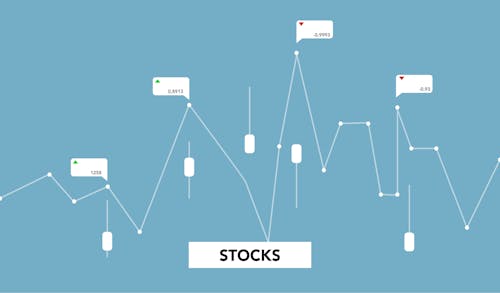Tales Of Stock Compounding: Does It Always Work?

Image Source: Pexels
Tracey Ryniec has talked about the magical power of compounding on the podcast in the past but wanted to revisit it after reading a Benzinga article about a neighborhood couple of Warren Buffett’s who invested money with him in the 1960s, which grew into millions of dollars.
But even in recent years, the Berkshire Hathaway B shares, which are the more affordable shares for retail investors, have been a good performer.
Over the last 5 years, Berkshire Hathaway B shares (BRK-B - Free Report) have outperformed the S&P 500, gaining 75% while the S&P is up 57.3% during that time.
But what if you aren’t lucky enough to live down the street from a 35-year-old Warren Buffett and compound your way to riches?
Does compounding ANY stock bring about the same magical results?
4 Stocks and 18 Years of Compounding
1. ExxonMobil Corp. (XOM - Free Report)
Tracey has discussed how her grandmother, and her grandmother’s sister, both inherited shares of ExxonMobil from their father in 1972. They both owned shares for decades.
Shares of ExxonMobil, however, have not had the returns of Berkshire Hathaway over the decades. From Jan 3, 2005 to June 13, 2023, or 18 years and 4 months, ExxonMobil was up just 112.5%, without dividends reinvested. You basically doubled your money in a little over 18 years. That underperformed both the S&P 500 and the Nasdaq 100.
But ExxonMobil is a cyclical and in 2023, it is again cheap, with a forward P/E of 11. It is also a dividend aristocrat, as it has raised its dividend for 41 consecutive years. It is currently yielding 3.46%.
Is it time to consider ExxonMobil for the portfolio again?
2. Microsoft Corp. (MSFT - Free Report)
We are all familiar with the Microsoft millionaires from the 1980s and 90s due to the dot-com boom.
But what if you bought on Jan 3, 2005, after the dot-com bust, and held through June 13, 2023? 100 shares purchased on Jan 3, 2005 would have cost you $2674. By 2023, it would have been up 1,150% to $33,429. This is without dividends reinvested.
Microsoft is now hitting new all-time highs after gaining 45% year-to-date. It’s not a cheap stock on a P/E basis, trading at 35x.
Can this rally in Microsoft continue in 2023?
3. The Sherwin-Williams Company (SHW - Free Report)
Don’t rule out the old economy companies when thinking about compounding.
If you had bought shares of Sherwin-Williams on Jan 3, 2005 and held until June 13, 2023, or 18 years and 4 months, your money, with dividends reinvested, would have compounded annually at 18.2%, or 2083%. This easily outperformed the S&P 500 which was up just 263.5%, or 7.25% annually.
Shares of Sherwin-Williams is up just 5.1% year-to-date, however. It’s not cheap with a forward P/E of 28.
Is it too late for buy-and-hold investors to buy Sherwin-Williams?
4. Fastenal (FAST - Free Report)
Fastenal is another old economy company that long-term investors may overlook. It’s a leader in industrial and construction supplies. If you had invested on Jan 3, 2005, and held until June 13, 2023, with dividends reinvested, you’d be up 1,049%, or a 14.16% annual growth rate.
Not too shabby for a company that isn’t in the tech industry.
Fastenal shares are up 18.9% year-to-date, but are expensive with a forward P/E of 27.
Is Fastenal too expensive for value investors?
More By This Author:
Have You Missed The 2023 Stock Rally?
5 Energy Stocks: Values Or Traps?
AI Stock Euphoria: Should You Buy, Hold Or Sell?
Disclaimer: Neither Zacks Investment Research, Inc. nor its Information Providers can guarantee the accuracy, completeness, timeliness, or correct sequencing of any of the Information on the Web ...
more


